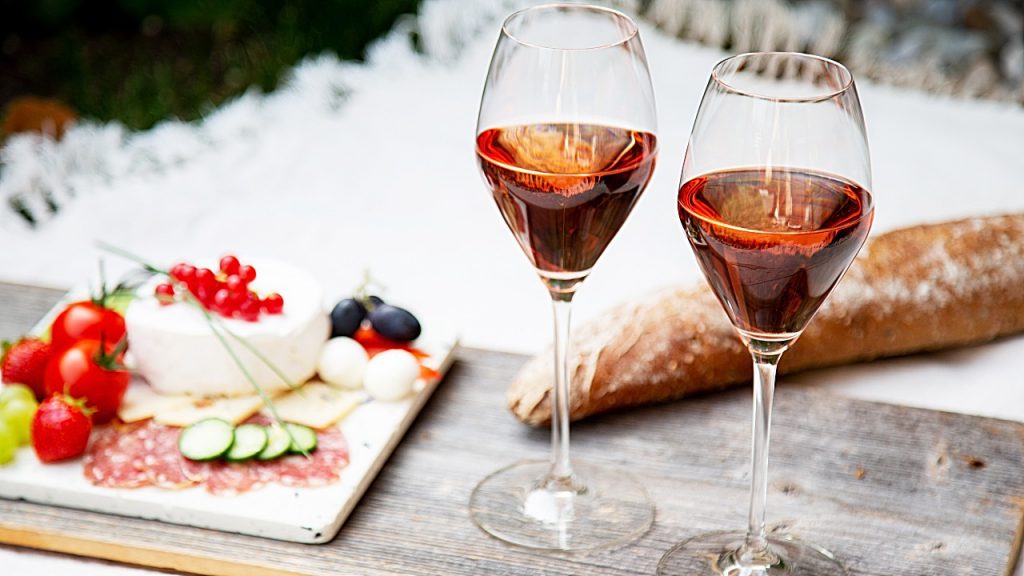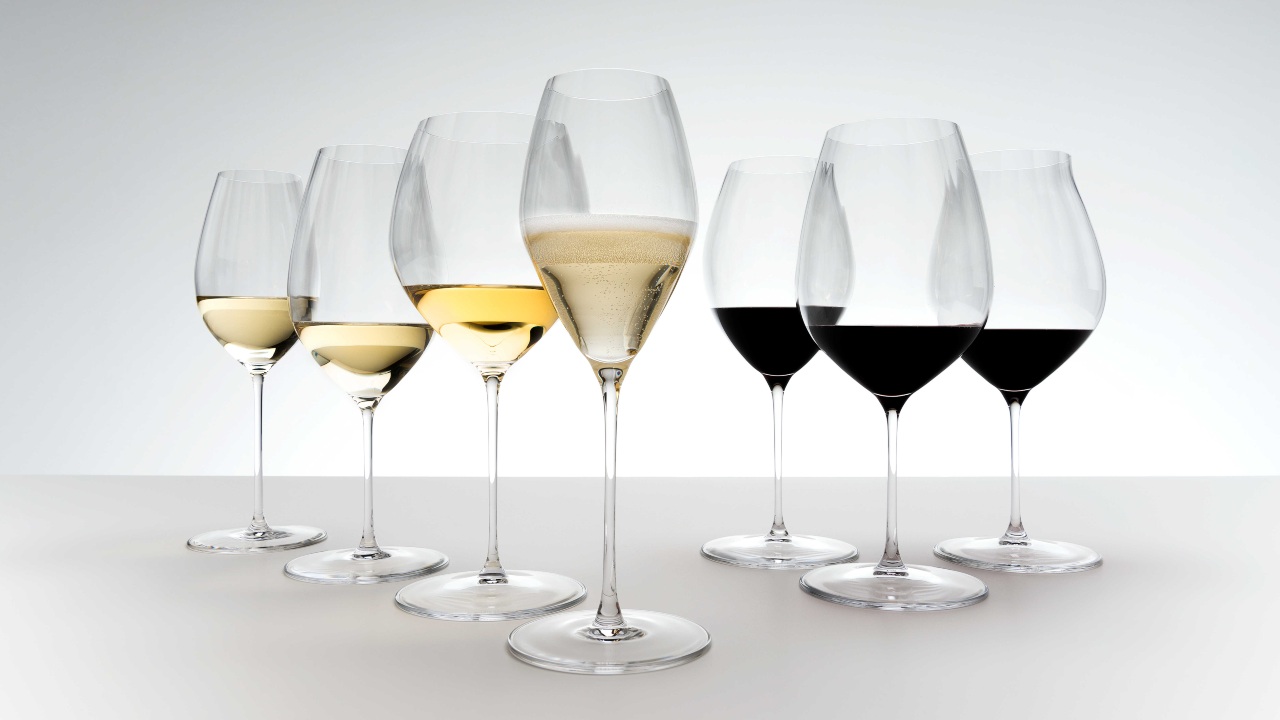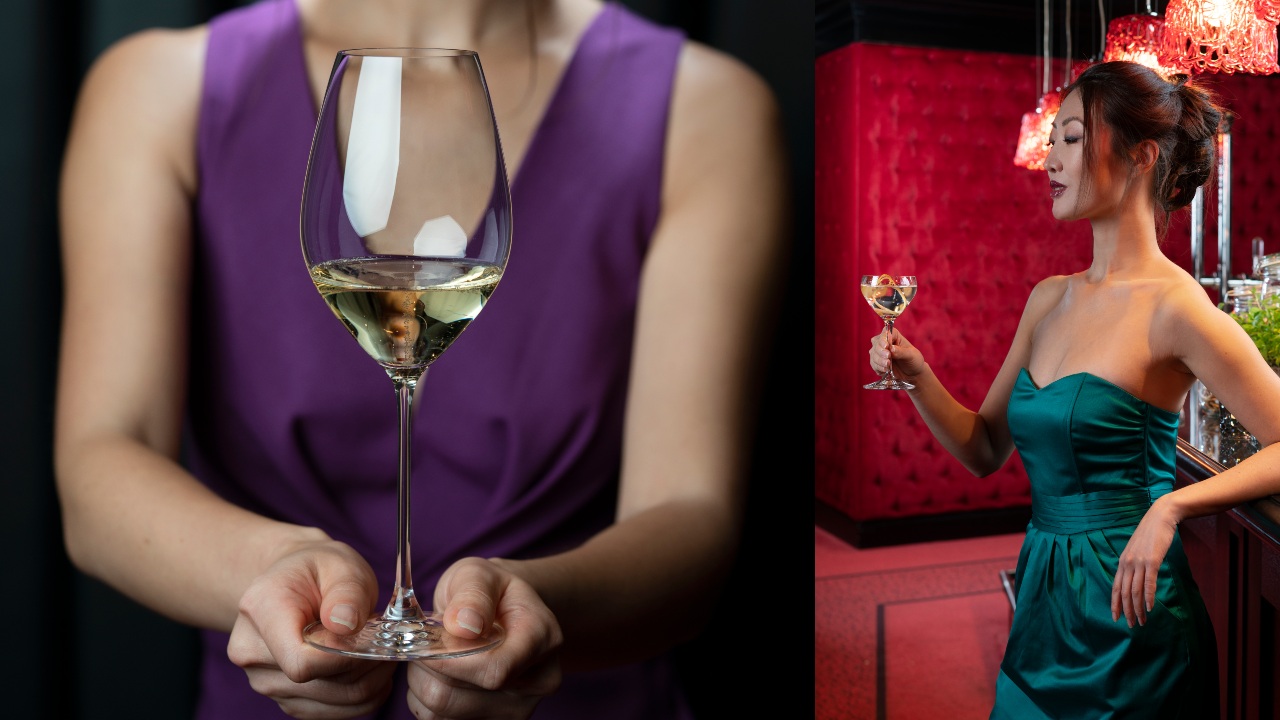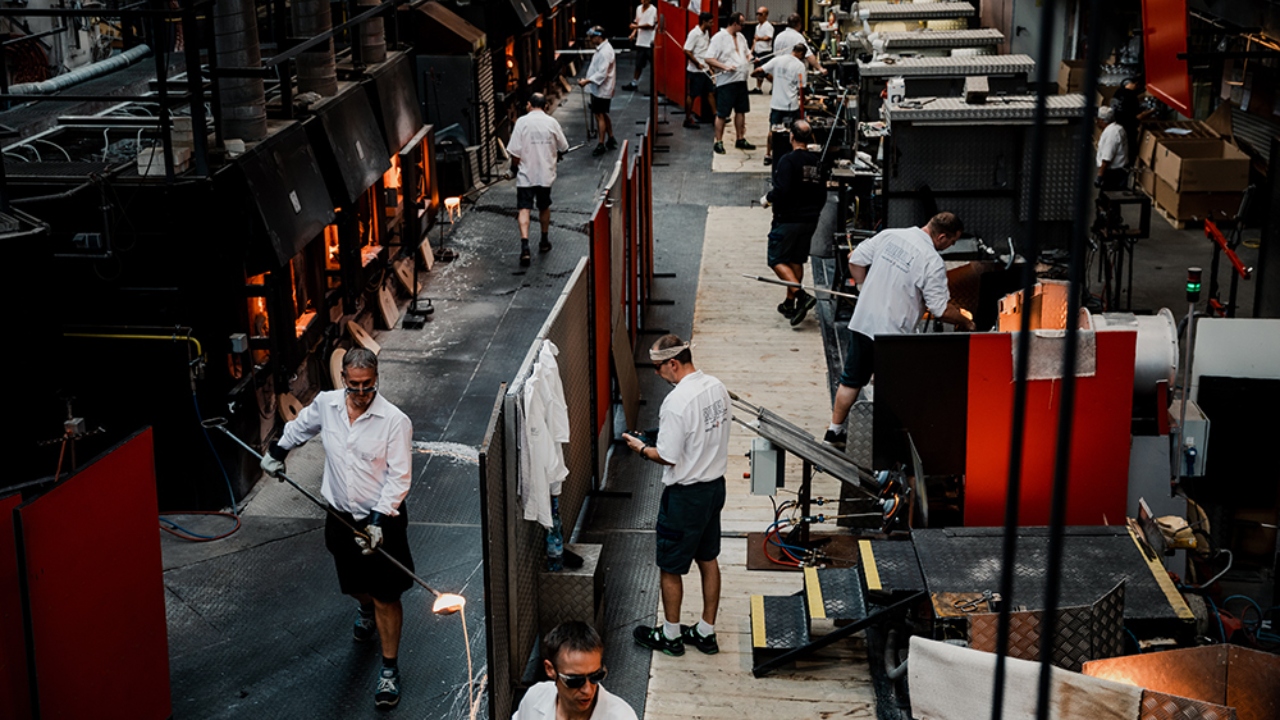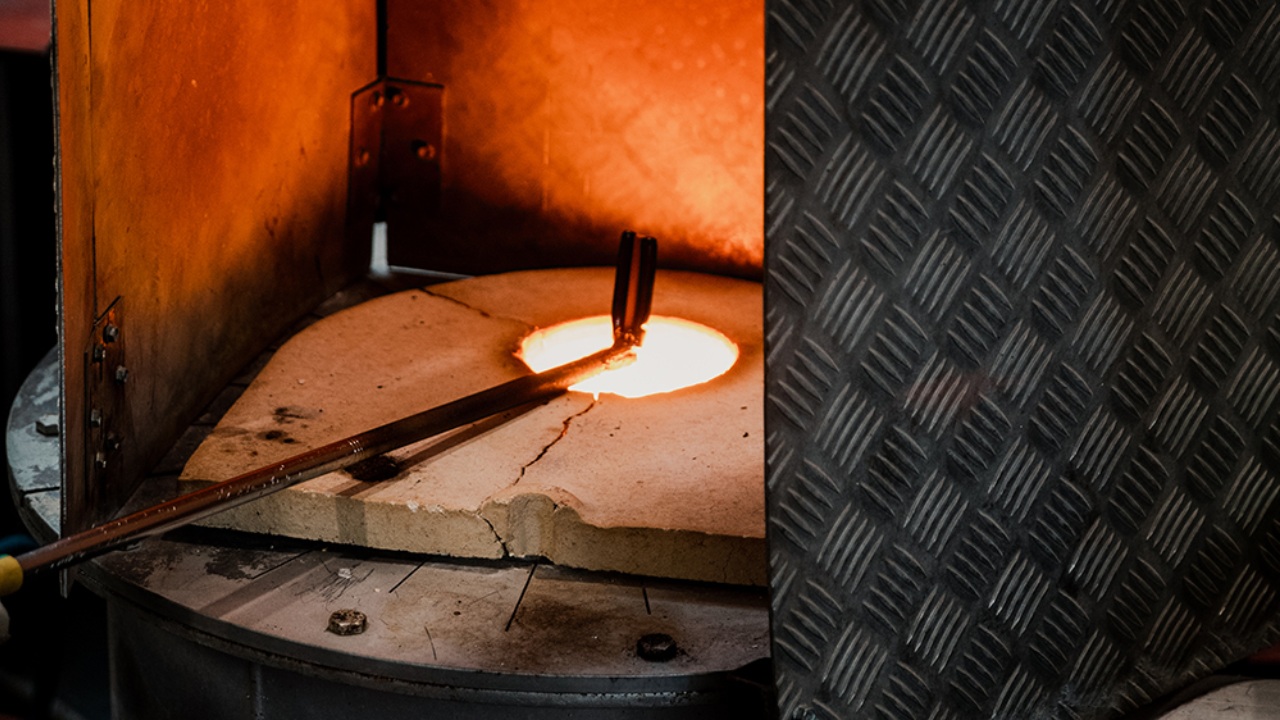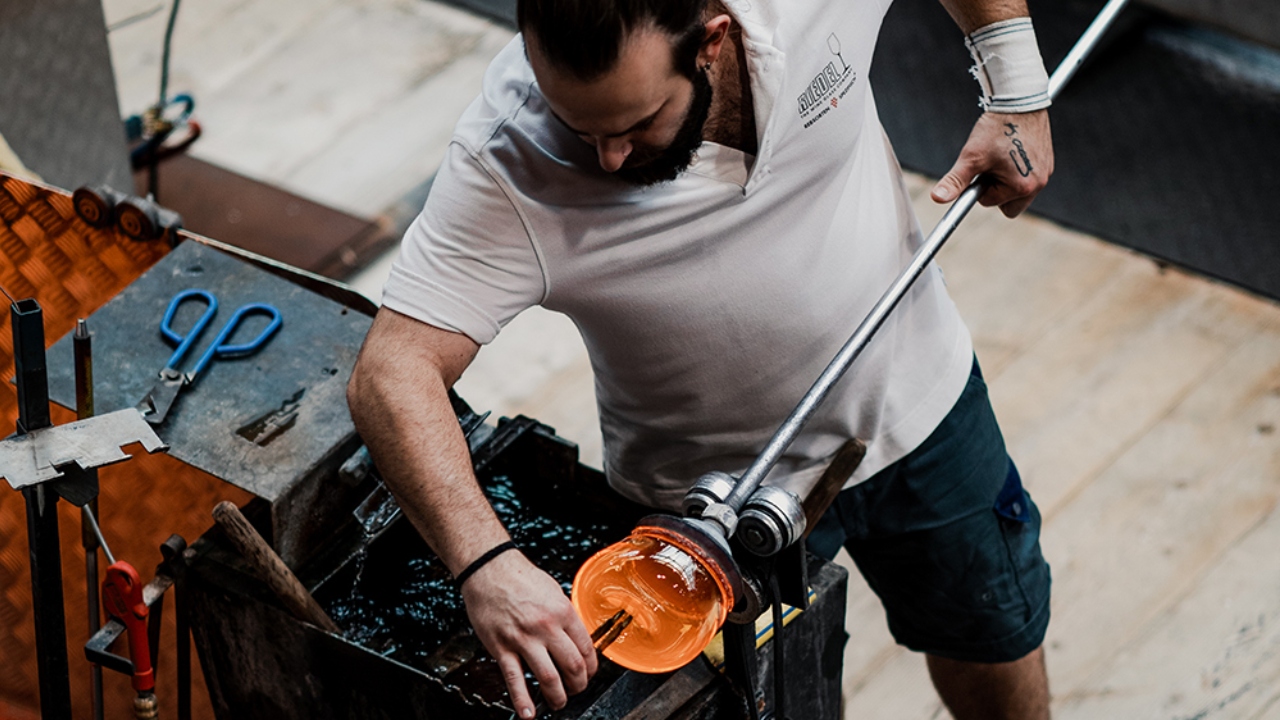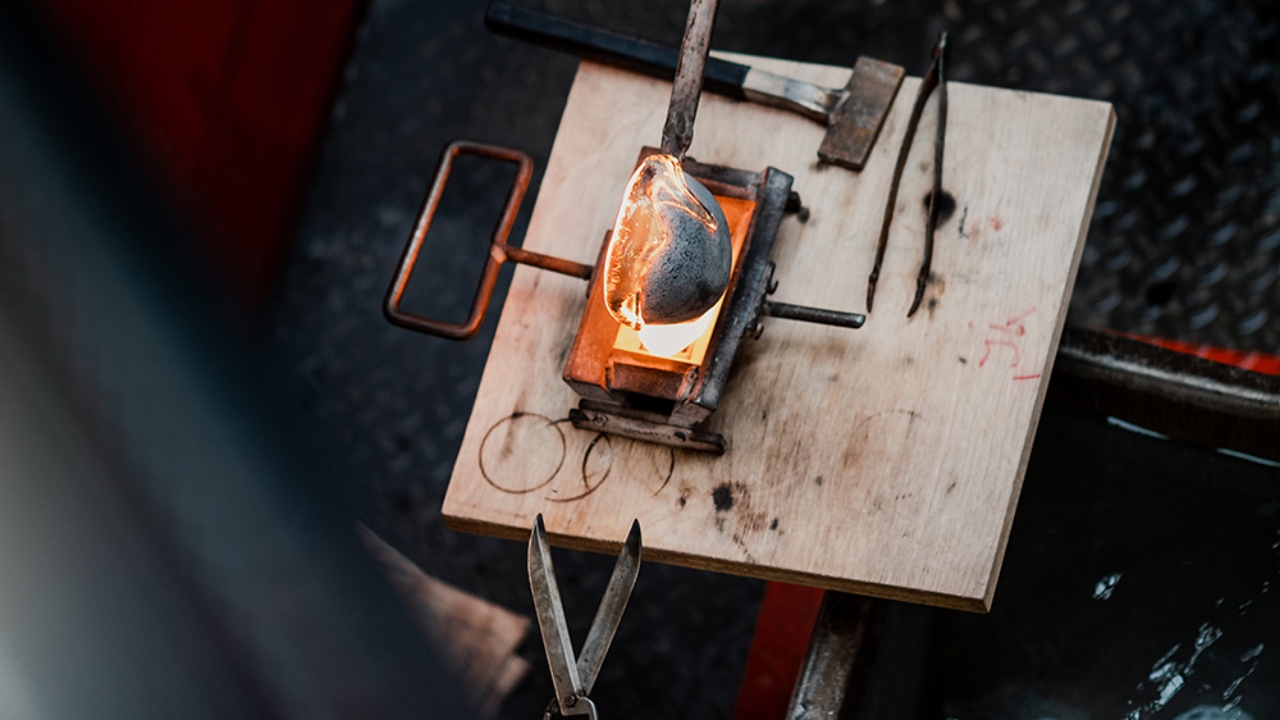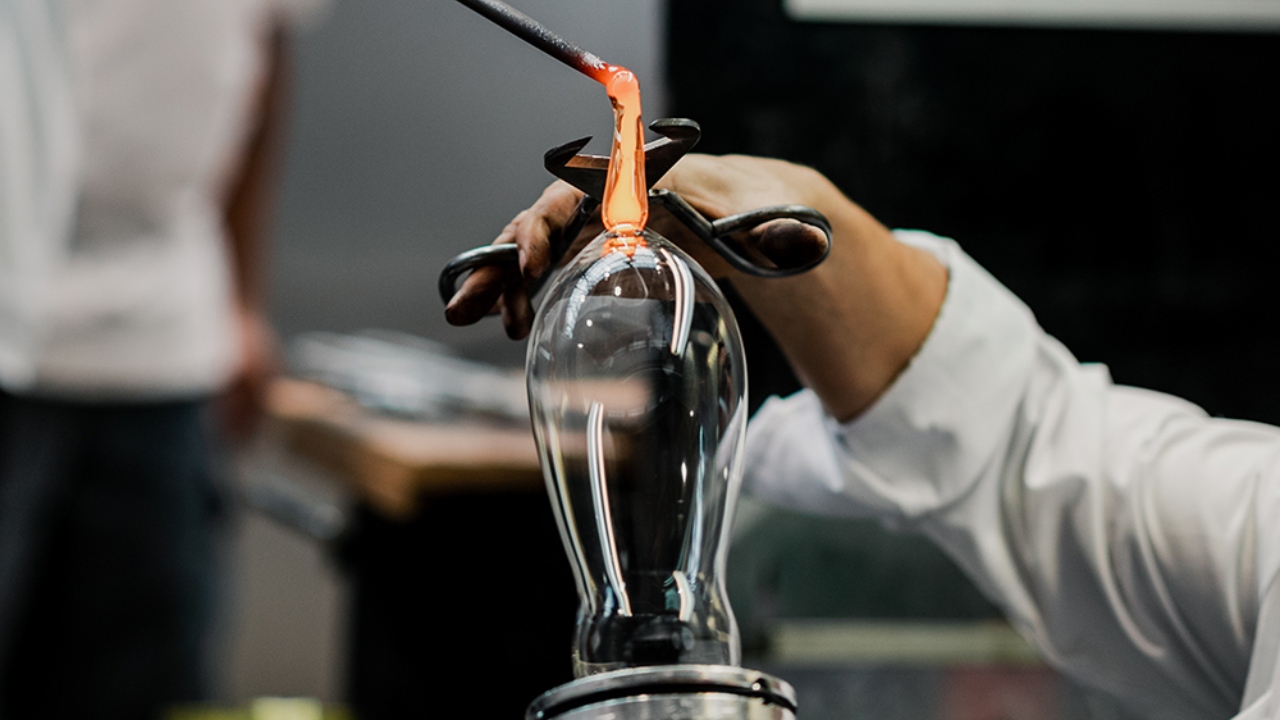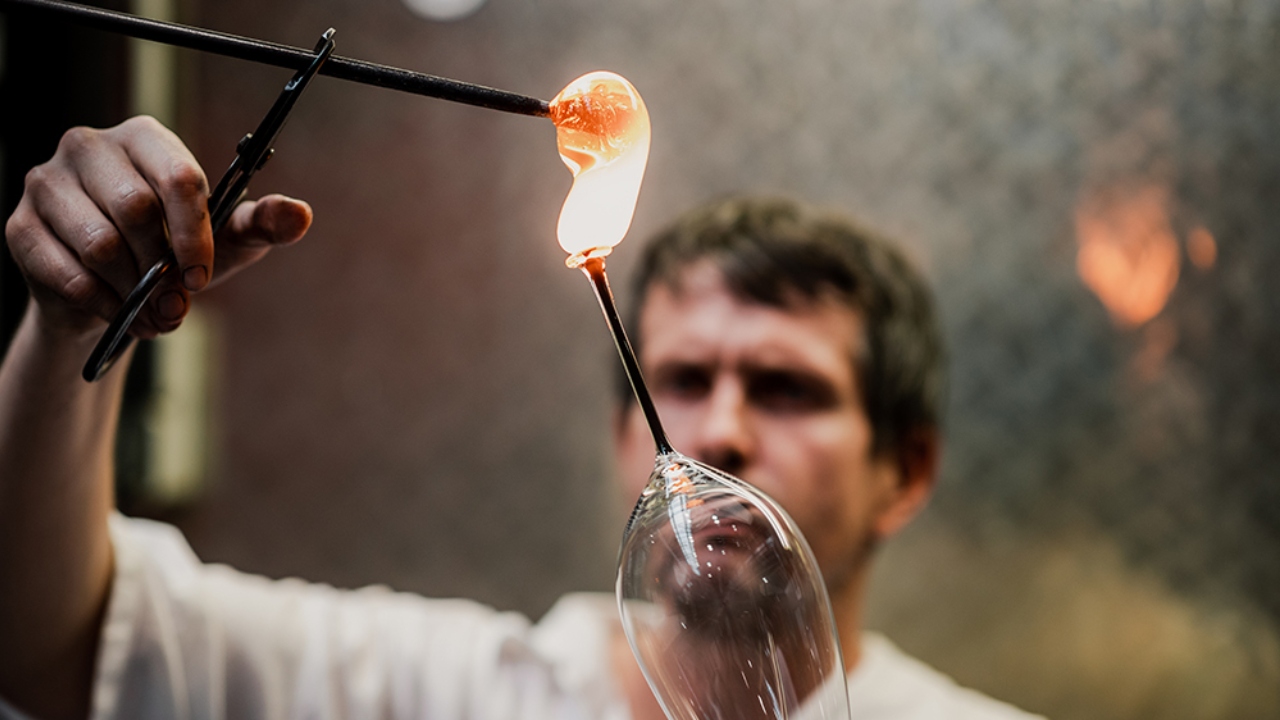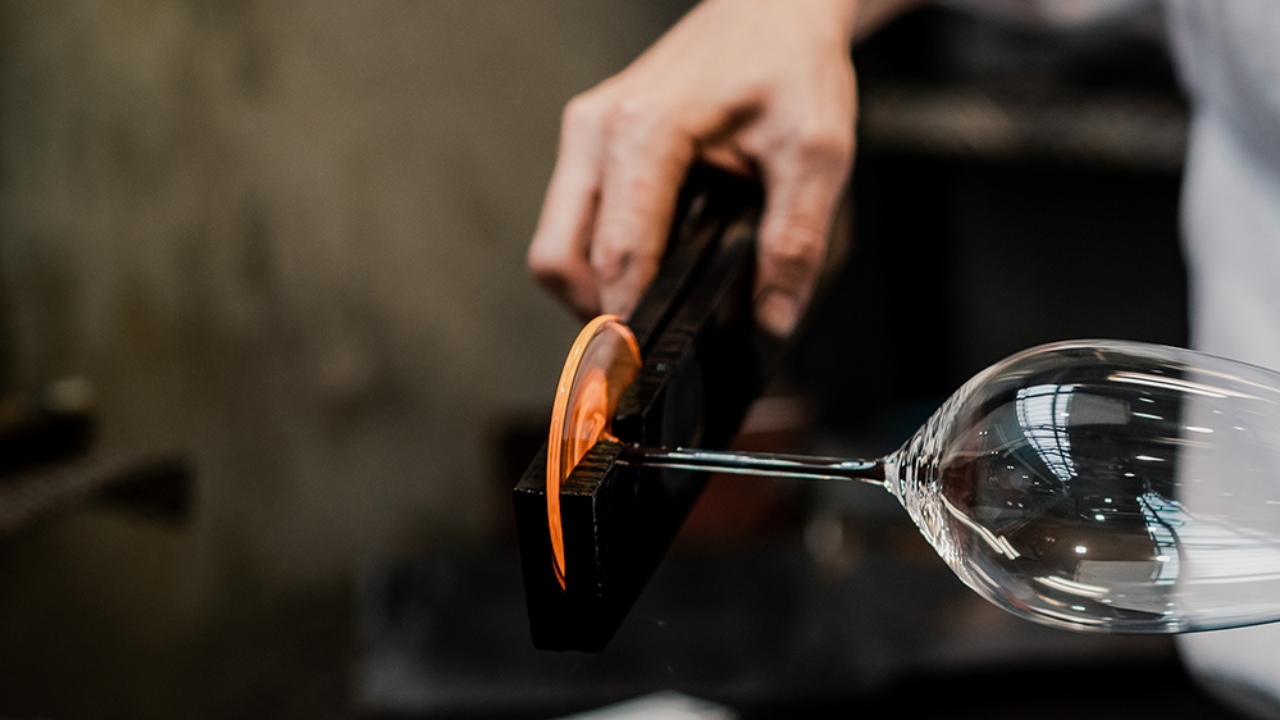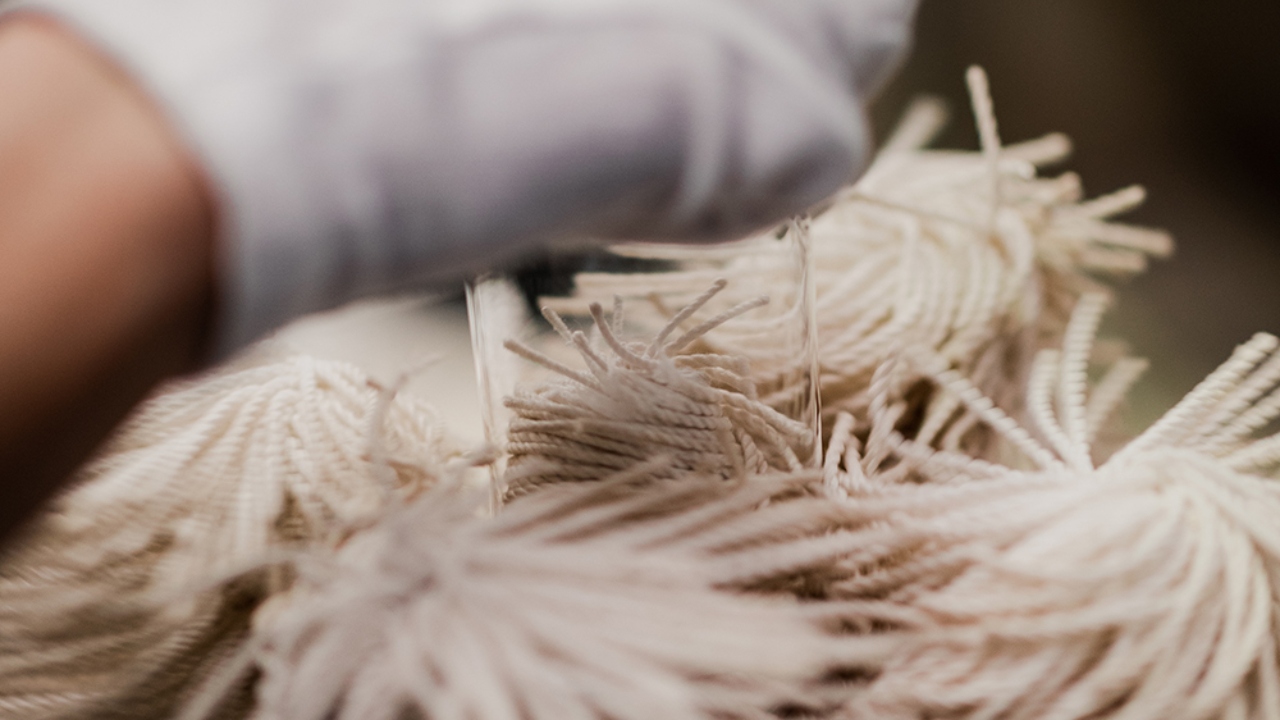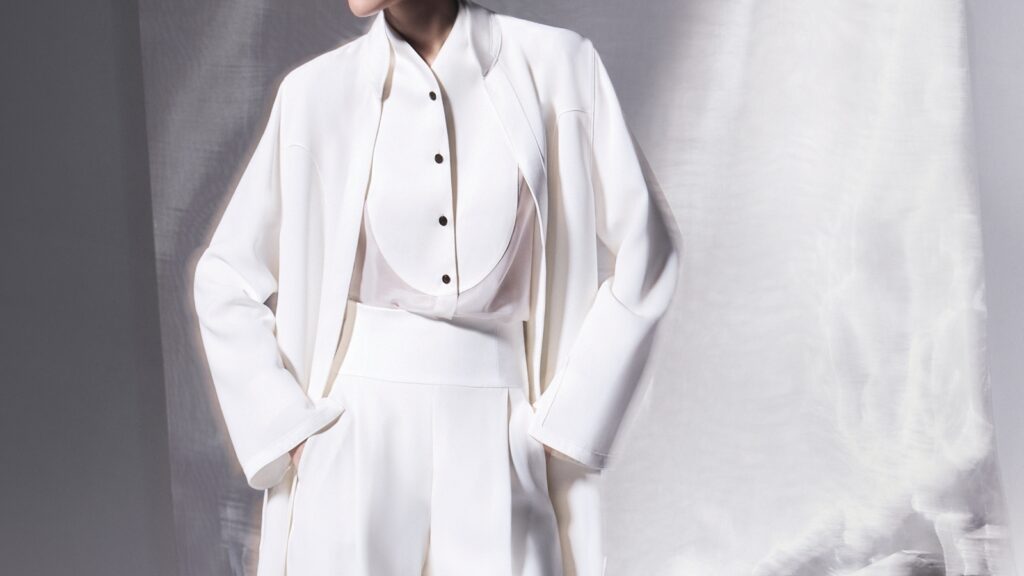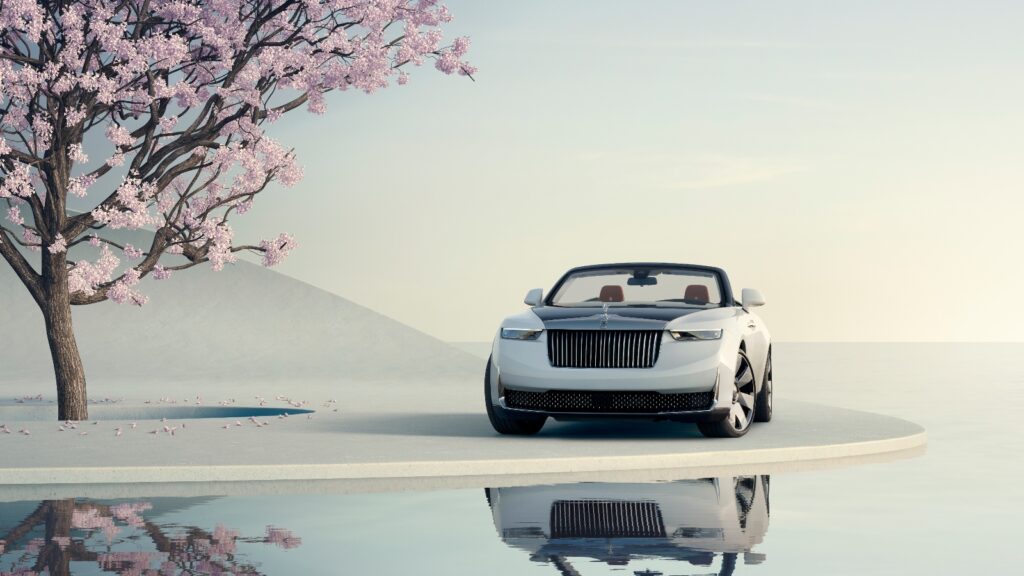Ask Maximilian Riedel who started the trend of ditching flutes in favour of wider-bowled glasses for sipping Champagne and he’ll tell you, “I did.” With his first Champagne wineglass, launched in 2014, he questioned tradition. Now the industry standard has moved to more generous bowls for bubbles. The wider glass exposes more surface area to oxygen, allowing the floral aromas and fruit flavours in the wine to express themselves. In a flute the yeast character is more dominant.
Maximilian, the 11th generation in Austria’s iconic glassmaking family and CEO of Riedel Crystal since 2013, will also tell you that his first passion is wine, not glassware. “The glass is only an instrument for making the wine taste as good as possible,” he says. It was his grandfather Claus Riedel who first fashioned an egg-shaped bowl (instead of the flared designs—think Waterford), pioneering the notion that the shape and size of a glass affect the taste of what’s in it.
Maximilian’s father, Georg Riedel, demonstrated to professionals and fans that Burgundy, say, doesn’t taste as good out of a glass designed for Bordeaux as it does out of a Burgundy- dedicated vessel. The wider bulb of the Burgundy glass encourages the delicate bouquet of Pinot Noir to develop. While the Bordeaux crystal is narrower, it’s also taller, giving that wine, which tends to have a higher alcohol content, more space to open up and lift the alcohol off the wine, allowing a Bordeaux’s aroma to come to the fore. And now it’s Maximilian who’s developing ever more innovative shapes matched to varietals, regions and even single wines, confident that every glass handblown in the factory will fulfill its mission—to magnify the pleasure of drinking the wine it’s destined to hold.
Hot as an Oven
On the production floor in Kufstein, Austria, furnaces hover at 2,000 degrees Celsius, turning quartz sand—sourced locally from Hirschau—into molten glass. From the first team member who extracts the malleable material from a furnace, five people will work on each glass.
Tools of the Trade
One of the proprietary tools Riedel has devised waits in a furnace to turn colored glass into hand-pulled stems. Coloured glass bars are heated on a metal plate until they’re soft enough to stick to the tool; then they are transferred to sit above an opening in the furnace, where the glass continues to heat up to 600 degrees Celsius.
Shape-Shifters
The glassblowers work fast, constantly turning the blow pipe to keep the crystal evenly distributed throughout the glass. Here, what will very quickly become one of the company’s notable decanters is pulled into shape. The glass is heated as it’s being shaped and cooled as it begins to take the desired form. The heat that’s released is captured and used to supply heat in other parts of the process.
Mold Rush
After being pulled from the furnace, the molten glass—attached to a pipe—is lowered into a wooden mold designed for a particular Riedel glass shape. The bowl of the glass will be hand-blown into the mold to ensure consistency across each line of vessels.
In Living Colour
A dab of new molten glass is added to the base of the bowl, and a master glassblower cuts off the precise amount needed and stretches it into a thin stem, in this case, for Riedel’s Sommeliers Black Tie series. Fifty percent of the company’s glassware is made from recycled Riedel crystal.
Base Camp
A team member brings one more addition of molten glass to the glassblower, who attaches it to the stem and will cut off just the right amount to form the base.
Spin Doctor
A wooden tool is used to press the hot glass into a disk; then it’s dropped into a thin mold and spun onto the shape of the base.
White Glove Treatment
After each glass has been shaped, it goes through a tempering process that slowly brings it to room temperature. Then the rim is laser-cut and fired to ensure consistency and a smooth edge. Finally, it’s hand-polished, packaged and sent on its way.
In Malaysia, Riedel wine glass is available at Asiaeuro Wines.
Photography: Oscar Baumgartner and Asiaeuro Wines
